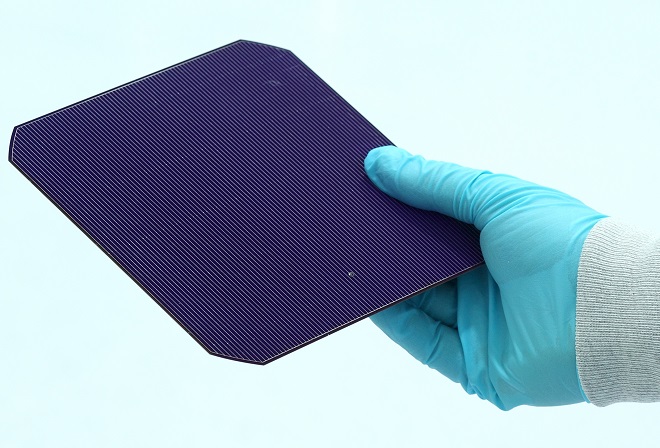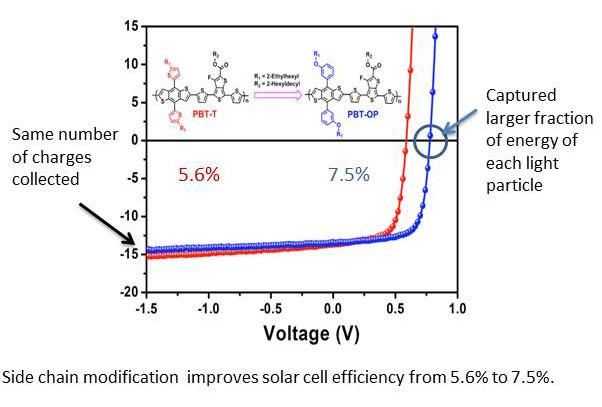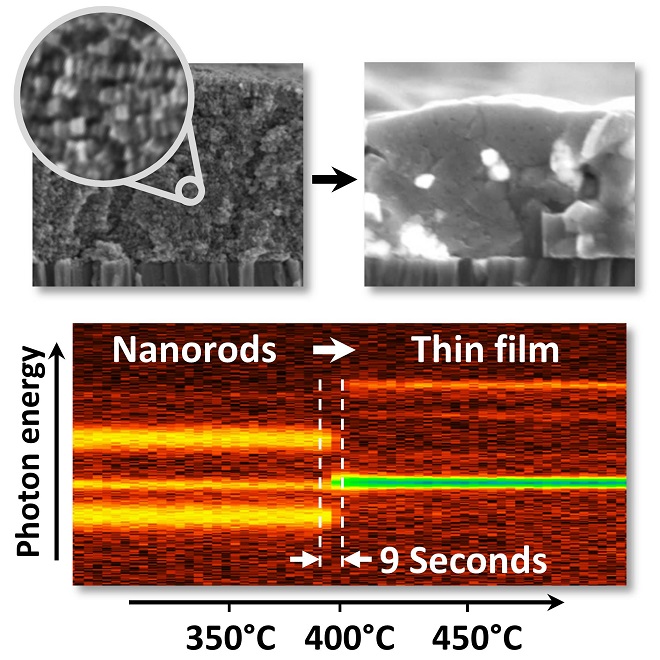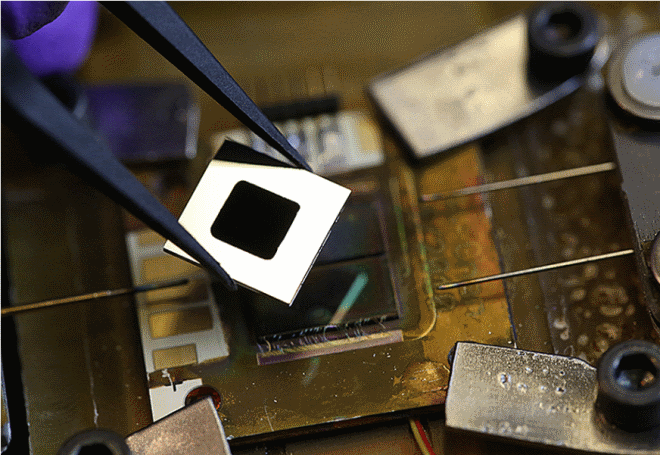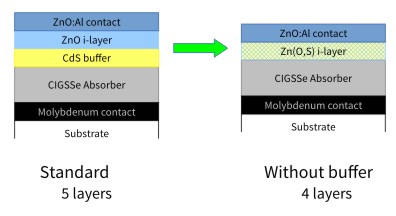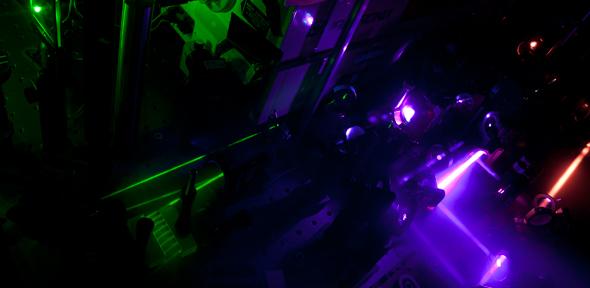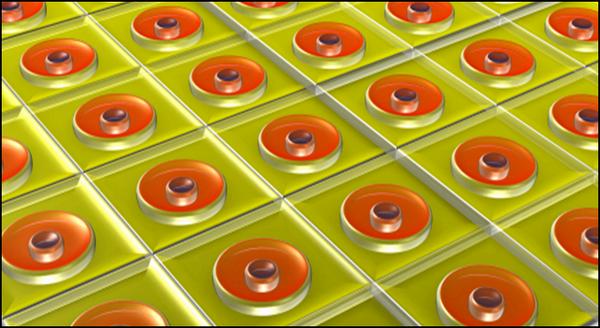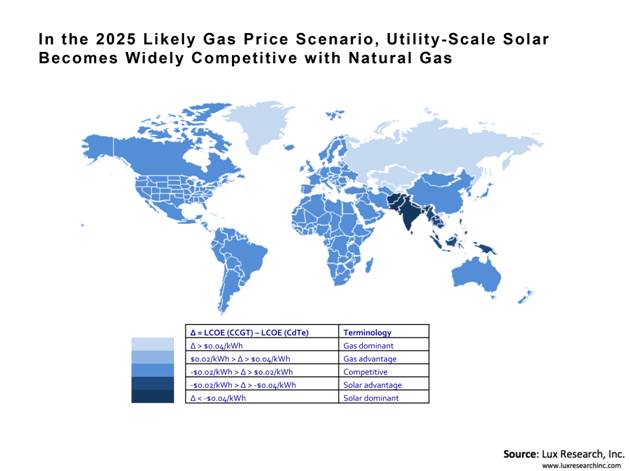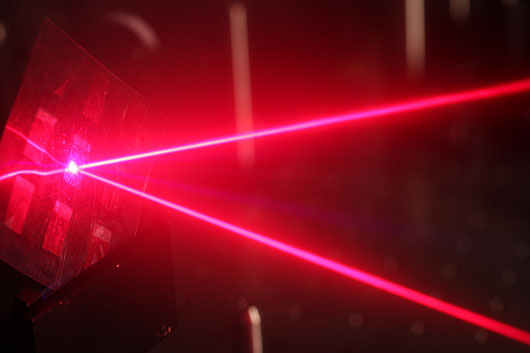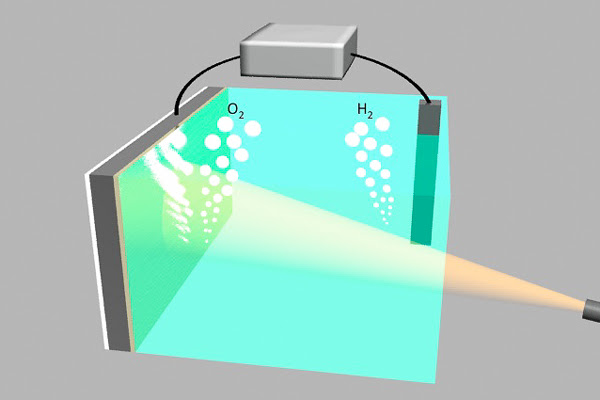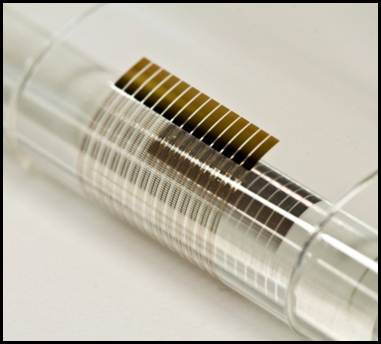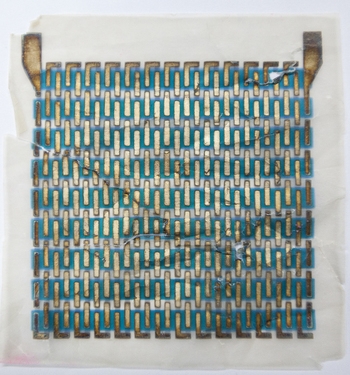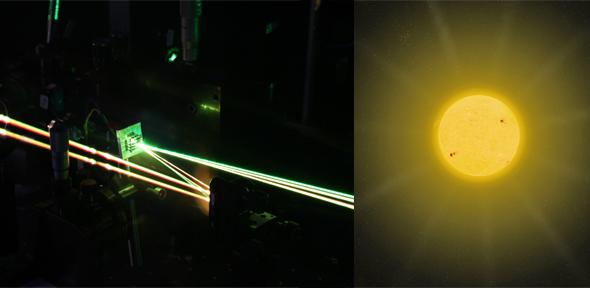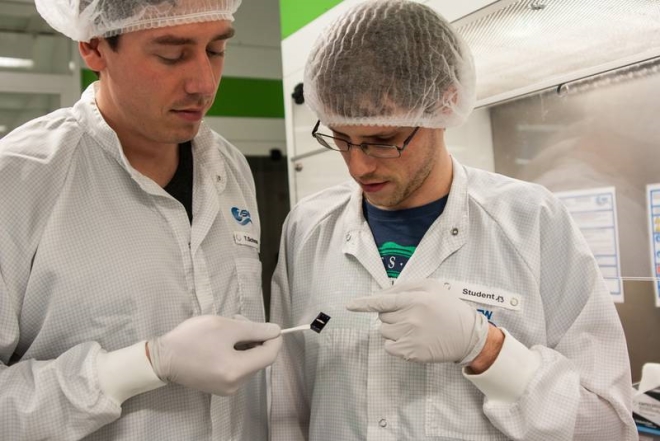
The Swiss-Inno HJT Project
Paving the way for the production of high-performance solar cells
Heterojunction silicon technology consists of ultra-thin layers of amorphous silicon in the nanometer range that have be…
Read >>World’s Largest Solar Thermal Power Project at Ivanpah Achieves Commercial Operation
All Three Units of 392 megawatt Ivanpah Solar Electric Generating System Now Delivering Solar Power to California’s Electric Grid
At full capacity, the facility’s trio of 450-foot high towers produces a gross total of 392 megawatts (MW) of solar powe…
Read >>Researchers Find Simple, Cheap Way to Increase Solar Cell Efficiency
Researchers from North Carolina State University and the Chinese Academy of Sciences have found an easy way to modify th…
Read >>From a carpet of nanorods to a thin film solar cell absorber within a few seconds
Research teams at the HZB and at the University of Limerick, Ireland, have discovered a novel solid state reaction which…
Read >>Understanding a new type of solar cell
Perovskite based solar cells are a hot topic in energy research and Science Magazine has put it on the list of Breakthro…
Read >>How to tap the sun’s energy through heat as well as light
New approach developed at MIT could generate power from sunlight efficiently and on demand.
A new approach to harvesting solar energy, developed by MIT researchers, could improve efficiency by using sunlight to h…
Read >>New Solar Car Concept Shines at Electronics, Cars Shows
Ford Motor Company, in collaboration with Georgia Tech, debuted a new solar car concept earlier this month at the 2014 International CES in Las Vegas.
The C-MAX Solar Energy Concept is a first-of-its-kind hybrid electric vehicle with the potential to free drivers of thei…
Read >>'Inverse opal' structure improves thin-film solar cells
Researchers have shown how to increase the efficiency of thin-film solar cells, a technology that could bring low-cost s…
Read >>HZB team develops chalcopyrite solar cells without cadmium-based buffer layer
A single layer takes on the job of what used to be two layers, doing away with the wet chemical process. Despite a much…
Read >>Quantum waves at the heart of organic solar cells
Researchers have been able to tune coherence in organic nanostructures due to the surprise discovery of wavelike electro…
Read >>Solar cell degradation observed directly for the first time
X-ray examination shows structural changes in "plastics" solar cells
Organic solar cells, especially those based on polymers are inexpensive to produce on a large scale. Thanks to their phy…
Read >>Solar to Become Competitive with Natural Gas by 2025
Solar electricity will reach cost parity in 10 major regions, accelerating adoption without subsidies, and will even benefit from abundant natural gas, Lux Research says
Far from being bulldozed by cheap natural gas, unsubsidized utility-scale solar electricity will become cost-competitive…
Read >>New research could lead to less expensive solar panels
A new discovery, by researchers at the University of St Andrews on why plastic solar cells work so well, could lead to b…
Read >>Stanford scientists create a durable, low-cost water splitter made of silicon and nickel
Stanford researchers have developed an inexpensive device that uses light to split water into oxygen and clean-burning hydrogen. The goal is to supplement solar cells with hydrogen-powered fuel cells that can generate electricity when the sun isn't shining or demand is high.
Stanford researchers have developed an inexpensive device that uses light to split water into oxygen and clean-burning h…
Read >>Characterizing Solar Cells with Nanoscale Precision Using a Low-Energy Electron Beam
Researchers from the NIST Center for Nanoscale Science and Technology have demonstrated a new low energy electron beam…
Read >>Research Team Finds Way to Make Solar Cells Thin, Efficient and Flexible
Converting sunshine into electricity is not difficult, but doing so efficiently and on a large scale is one of the reaso…
Read >>The chemistry of color: Energy researcher develops dye-based solar cells
Researchers are developing next-generation solar cells using chromophores or, in lay terms, dyes.
Read >>Imec Simplifies i-PERC Solar Cell Processing by implementing laser doping from ALD-Al2O3
Important Step Towards Reducing Cost-of-Ownership of PERC Technology
The new laser doping processing sequence eliminates the necessity of a firing step to create the local BSF in i-PERC sol…
Read >>Two for one in solar power
A process that could revolutionise solar energy harvesting has been efficiently demonstrated in solution for the first time.
A process that could revolutionise solar energy harvesting has been efficiently demonstrated in solution for the first t…
Read >>New material used in thin solar cells
European record: ZSW achieves 10.3% efficiency with Kesterite absorber material
Scientists in Stuttgart had a breakthrough in their search for more advantageous materials and processes in the manufact…
Read >>
There are 426 articles in Solar Energy
Solar Energy Archive
